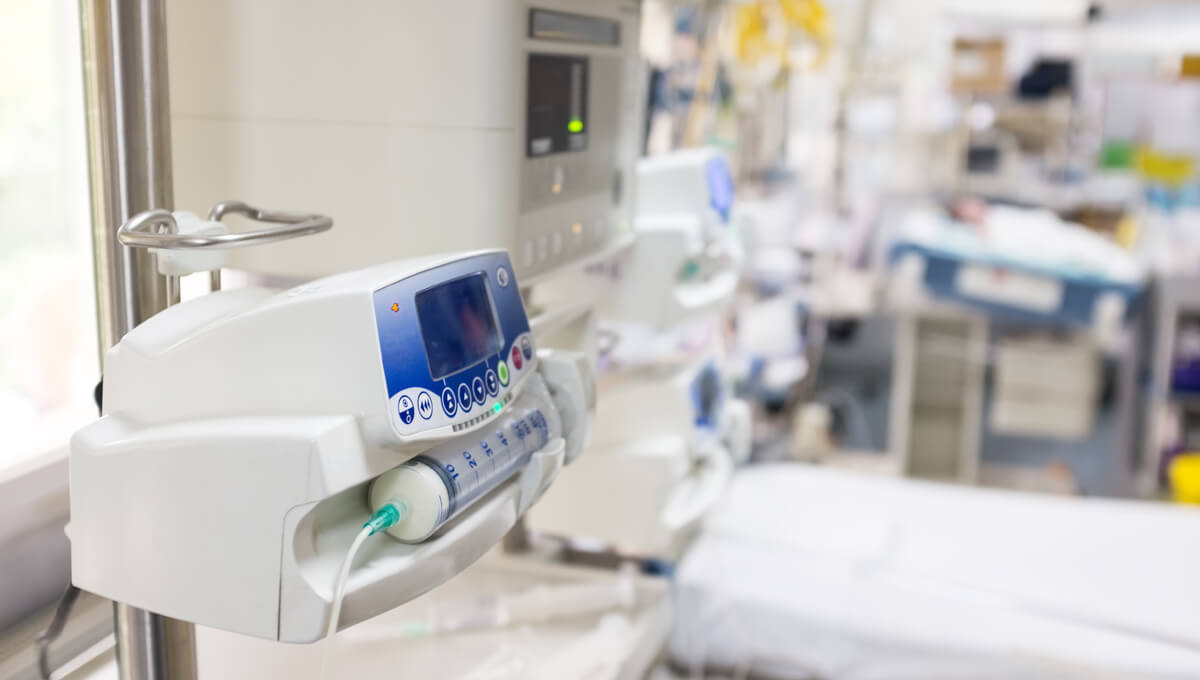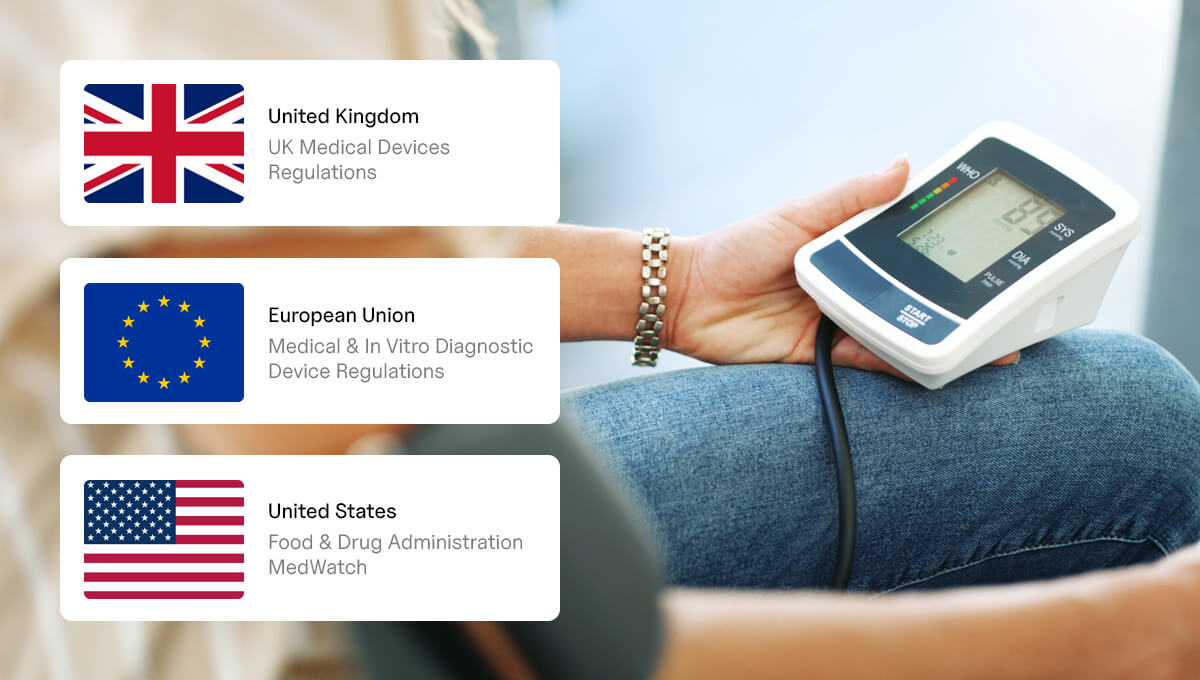On 16th June 2025, a new Part 4A under The UK Medical Devices Regulations (2024) took effect, outlining new requirements for Post-Market Surveillance (PMS) on medical devices being placed on the GB market.
Here is everything you need to know about the new legislation, the obligations involved, who’s affected, and what they need to do.
Overview of the new Post-Market Surveillance (PMS) legislation
What’s in effect?
Under the newly amended legislation, key obligations for manufacturers placing medical devices on the GB market are:
- Establish a formal PMS system, defined by a documented PMS plan.
- Gather and analyse real-world performance and safety data.
- Produce Post-Market Surveillance Reports (PMSRs) and Periodic Safety Update Reports (PSURs) based on device risk class.
- Report serious incidents rapidly and conduct Field Safety Corrective Actions (FSCAs) with corresponding notices.
- Notify the MHRA immediately if a device causes, or could cause, harm.
The objective of this legislation is to enhance the traceability of safety issues in medical devices, enabling swift intervention and ensuring the protection of patients.
Who is affected?
The legislation affects all manufacturers placing UKCA-marked medical devices, including in vitro diagnostics and implantable devices, on the GB market (England, Scotland, and Wales). This includes both domestic manufacturers and non-UK based manufacturers, who must comply via their UK Responsible Person.
Devices already on the GB market are not exempt and must be assessed and retrofitted with the new PMS system requirements to ensure compliance.
Why it matters
The new legislation is important for several key reasons. It introduces and clearer and more risk-proportionate PMS requirements, holding manufacturers to legally binding standards for GB-placed devices. As part of these requirements, the legislation promotes the collection of real-world evidence, which will ultimately enhance and increase the amount of ongoing device safety monitoring. Finally, the new PMS systems manufacturers must put in place will improve regulators’ abilities to quickly address any threats to patient safety and reduce the likelihood of potential harm.

What should Post-Market Surveillance (PMS) look like under the new regime?
Manufacturers are now required to put together formal, written PMS systems for their GB-placed devices. Here are some specifics about what these PMS plans should look like to be compliant with the new legislation.
PMS plan & report formats
PMS Plans (Reg44ZF) must be written and risk-based, and must include:
- Objectives and methods for collecting realworld data (clinical feedback, complaints, literature)
- Analysis strategies
- Vigilance/reporting processes
- Preventive/corrective actions tied to risk management
- Device lifetime and PMS period definitions
The required reports that must be carried out under the new legislation are:
- PMSR (Post-Market Surveillance Report) - required for all low-risk devices (Class I). Must include a summary of PMS data and actions since the last report.
- PSUR (Periodic Safety Update Report) – required for devices deemed higher-risk (Class IIa, IIb, IVD C/D). Must use MHRA-standard templates and be provided on a set frequency schedule.
Timelines & deadlines
Incident reporting:
- Initial reports must be given within 15 calendar days of manufacturer awareness. This is half the time previously required in the old legislation, which was 30 days.
- Incident reports must include the device’s details (including UDI), a description of the incident, and the investigation results.
PSUR/PMSR frequency:
- Class III, implantables: Annually
- Class IIb, and IVD C/D: Annually
- Class IIa, and non-implant IIb: Every 2 years
- Class I: Every 2 years or on request
MHRA may request to see PMSRs or PSURs at any time, and manufacturers must supply this information within 3 working days.
Changeover to new MHRA for templates is already enforced, having been required from 16th May 2025 (one month prior to the new legislation enforcement date of 16th June).

How does the new legislation compare with EU and US regimes?
UK PMS legislation compared to EU MDR/IVDR
Many principles of the new UK legislation are similar to the existing EU regime, including requirements for PMS plans, PSURs, and overall vigilance. However, the new system requirements for GB-placed devices are more prescriptive, with tighter timelines, standard templates, UDI mandates, defined lifetime or PMS period, and explicit trend reporting obligations required of manufacturers.
For CE-marked devices in the GB market, MHRA expects manufacturers to comply with UK legislation, however it cannot legally enforce updates to CE technical files.
UK PMS legislation compared to US FDA
The US FDA passively uses MedWatch and actively uses a number of post-approval studies in their medical device PMS regime. In comparison, the new UK legislation is more analogous to active and ongoing safety surveillance and reporting, with formal requirements for real-world data collection and trend-based reports.
Timelines in the US vary by device type, but are typically faster than the UK regime – for example, MDR (Medical Device Reporting) has a 10-day timeline requirement. However, formatting requirements on PMS plans and reports for US-placed devices tend to be less prescriptive than what is now required in the UK.
Is there a grace or transition period for manufacturers to adopt the new UK legislation?
New MHRA planning documents and templates were released on 16th May 2025, giving manufacturers one month to transition before the new legislation took full effect on 16th June 2025. From 16th June 2025, there is no general grace period, and manufacturers should now be compliant with the new regime.
Exemption to this applies only if manufacturers stopped placing or servicing a specific device model prior to 16th June – in which case, older PMS rules apply to legacy devices.

What do manufacturers need to do now?
To ensure they are compliant with the new UK legislation on Post-Market Surveillance from MHRA, manufacturers must take the following actions if they have not done so already:
- Revise their PMS systems to align with the new requirements.
- Draft or update mandatory PMS plans for all GB-placed devices, specifying objectives, data collection, analysis methods, vigilance processes, and corrective actions.
- Implement shortened incident-reporting timelines and produce necessary PMS and PSUR documentations in line with the required timelines and frequency.
- Adopt the use of new MHRA templates for plans and reports.
- Ensure Field Safety Corrective Actions and notices meet the new, stricter, criteria.
If you need support
If you need support understanding or enforcing the new UK legislation within your organisation, then the consultancy team at Blue Frontier can help guide you through the process.
With the new regime already in effect, get in touch today to ensure your organisation is compliant.
FAQs
Manufacturers are not explicitly required to capture device diagnostic transmissions or electronic IQC/EQA results under the new UK PMS legislation—but the regulations strongly encourage proactive, data-driven monitoring that could include these sources.
By collecting data from those sources manufacturers can better-meet the new legislation by detecting trends early, enhancing real-world evidence collection, and improving the timeliness of reporting.
A risk-based Post-Market Surveillance (PMS) system is a structured, proactive framework designed to monitor the safety, performance, and real-world use of medical devices after they are placed on the market. Risk-based PMS systems should be tailored according to the device’s risk classification, complexity, and intended use, as required under the UK’s new legislation, meaning they are not one-size-fits-all.
Crucially, these PMS systems must reflect risk proportionality and real-world feedback loops in order to be compliant. A compliant, risk-based PMS system will typically require the following sections:
- PMS Plan
- Real-World Evidence Integration
- Documentation & Evidence
- Compliance & Oversight
While there are several platforms and software suites available to support PMS compliance, the heavier reliance on diagnostic data, combined with the fact that there is not a one-size-fits-all format for the documentation and PMS systems now required, means that most organisations will benefit from seeking more tailored support.
At Blue Frontier, we have the experience and expertise necessary to help organisations capture diagnostics, IQC & EQA data for both connected and non-connected medical devices. With our support, manufacturers are able to more accurately and efficiently collate data for tracking and trending, evidence the health and maintenance of their devices, and ensure all new PMS controls are met.






